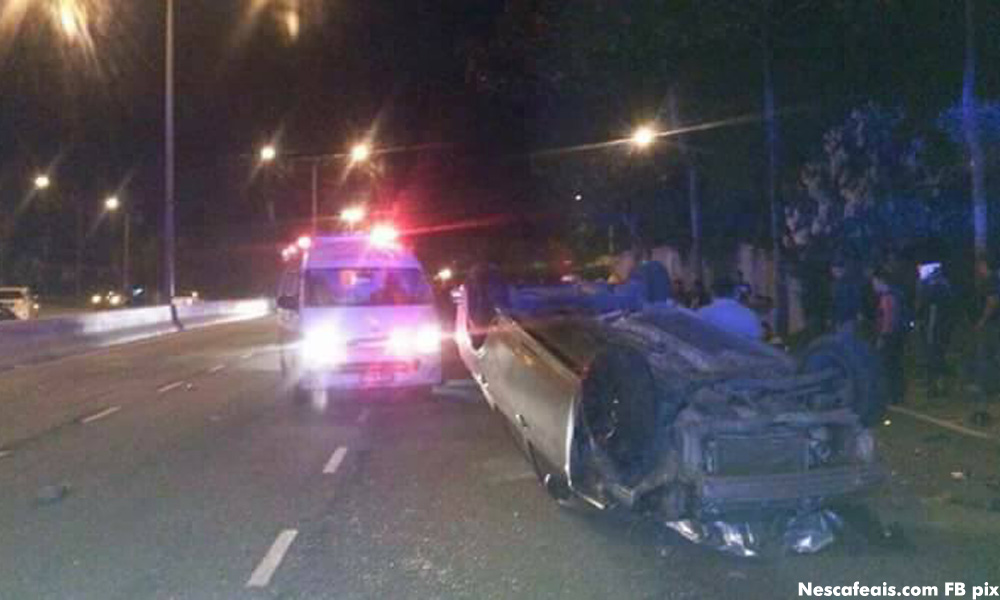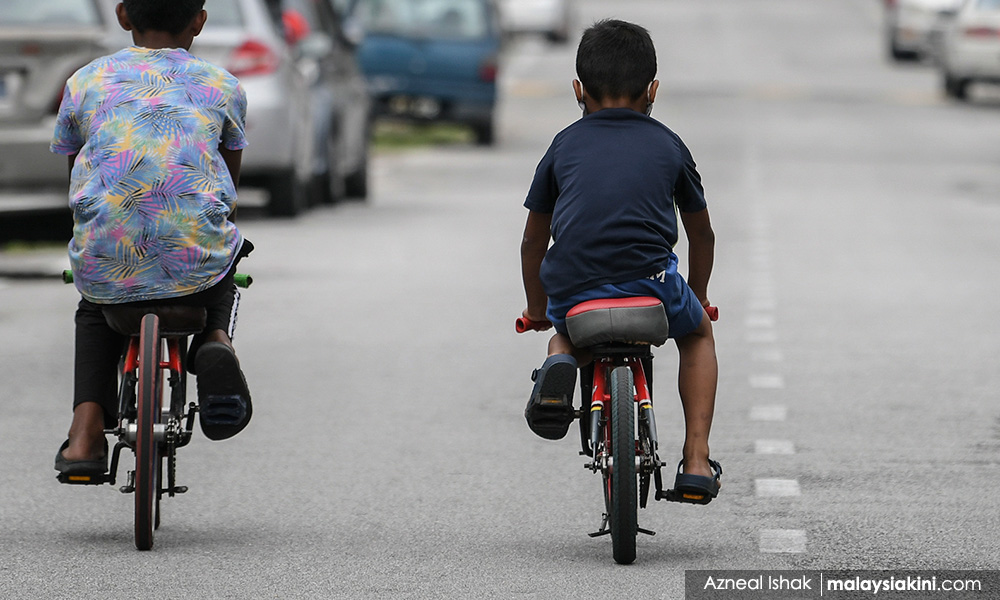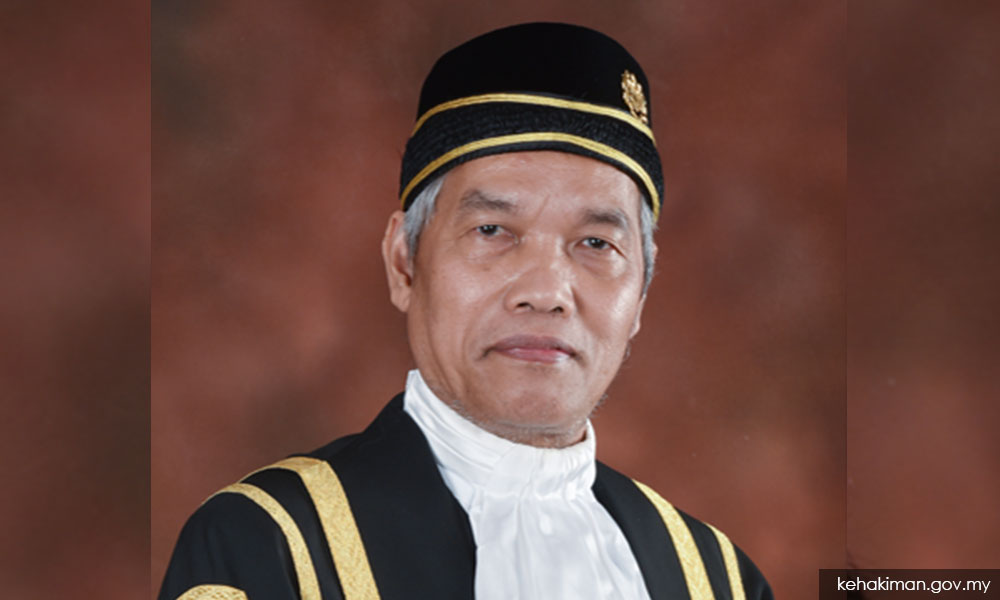KINIGUIDE | With Sam Ke Ting released from custody and with the Court of Appeal's greenlight to appeal, the clerk's legal team is now busy preparing written submissions on her behalf.
The many statements from lawyers, politicians and netizens have possibly muddied the metaphorical waters over whether she was rightly or wrongly found guilty and sentenced for reckless driving that involved the death of eight teen cyclists in 2017.
This KiniGuide revisits the judgments to look at the various facts of the case.
What is the Sam Ke Ting basikal lajak case?
Five years ago, a clerk in Johor, Sam Ke Ting, was charged in the Johor Magistrate's Court with reckless driving causing the death of eight teenagers in a road collision at 3.20am on Feb 18, 2017 at Jalan Lingkaran Dalam, Johor Bahru.
Those killed were between 13 and 16 years old - Mohamad Azrie Danish Zulkefli, 14; Muhamad Shahrul Izzwan Azzuraimie, 14; Muhammad Firdauz Danish Mohd Azhar, 16; Fauzan Halmijan, 13; Mohamad Azhar Amir, 16; Muhammad Harith Iskandar Abdullah, 14; Muhammad Shahrul Nizam Marudin, 14 and Haizad Kasrin, 16.
The case is also known as the "basikal lajak case" in the public lexicon because the deceased were at the time riding basikal lajak, a sort of modified bicycle popular among teenagers.
A basikal lajak is a tiny bicycle, often without handles or brakes in the interest of speed. Basikal lajak races often take place downhill on hilly roads.

What is the status of the case, and what are the court's findings so far?
The motorist's court case took a circuitous route up and down the judicial hierarchy between the Johor Magistrate's Court when she was first charged at the age of 22 and now, before the Appellate Court when she is 27.
In October 2019, Sam was initially acquitted by the Magistrate's Court without her defence being called, and the prosecution appealed the ruling.
In February 2021, the Johor High Court allowed the appeal, ordering the accused to enter her defence. The case was sent back down to the same magistrate for the defence stage of the trial.
In October 2021, the lower court again acquitted her at the end of the defence, saying she succeeded in raising reasonable doubt in the prosecution case. The prosecution responded with another appeal in the High Court.
On April 13 this year, the High Court allowed the appeal, convicting and sentencing Sam to six years in jail and RM6,000 fine in lieu of an additional six months imprisonment.
The High Court's full written judgment has yet to be released.

What do we know about the area where the incident took place?
According to the written judgment by magistrate Siti Hajar Ali, Jalan Lingkaran Dalam is a hilly and winding three-lane federal expressway.
The road is located next to a Muslim cemetery, Tanah Perkuburan Mahmoodiah, with large trees on the shoulder.
A police witness testified that the area is popular with basikal lajak racers, who favour it for the terrain and because it is "sunyi dan menyeramkan" (quiet and spooky), being dimly lit and next to a cemetery.
The road is uphill for motorists driving from the direction of Petronas petrol station before it reaches a crest and goes downhill towards Thistle Hotel.
Were police aware of the basikal lajak races?
Yes, two days before the incident, 20 racers were arrested during an operation against basikal lajak there, a police witness testified.
According to the witness, there were about 60 cyclists during that operation. The others managed to escape by foot through the cemetery and had jeered at police as they fled.
The witness said the racers would usually start at the top of the hill on Jalan Lingkaran Dalam and "fly" down the road to the Thistle Hotel traffic light.
He described "fly" as lying in a prone position on the bicycles, with their legs straight behind them in a "Superman-like" position.
He said police had several times raided these races and had held the juvenile offenders in the lock-up for their parents to pick them up.
What happened at 3.20am on Feb 18, 2017?
According to the magistrate's written judgment, Sam was driving a Nissan Almera uphill on the left lane, from the direction of Petronas petrol station.
At the same time, about 30 cyclists were on all three lanes of the road, just beyond the hilltop.
Witnesses testified that some were lining up to race, while others were bystanders watching the race.
Eight teenagers died, of which six died on the spot. Eight others were severely injured. Most of the cyclists who were hit were in the left lane.
It was argued that the first basikal lajak was hit just beyond the hilltop, near a bend where traffic flowed into Jalan Lingkaran Dalam.
However, Magistrate's Court found that the locations of the deceased were not established, and the points of impact were unclear from the investigations.
A police witness testified that Sam was driving in the middle lane when she hit the first basikal lajak rider before her car careened to the left, hitting the others. Surviving basikal lajak riders who testified said they were hit on the left lane.
The car sustained structural damage, mostly on the front and on its roof, but the main chassis and engine were unscathed.
Some of the bicycles also sustained damage on the front, raising the question of whether they were riding against traffic.
There was no damage found on the greenery on the shoulder of the road or the divider.
Photos taken of the scene showed the car turned turtle. Was it because Sam was speeding?
Witnesses, including cyclists who survived the crash, said bystanders had toppled the car after the crash. Sam was out of the vehicle when it happened.
According to the magistrate's written judgment, by 3.40am, 20 minutes after the crash, the area was "huru-hara" (chaotic), with the presence of basikal lajak riders, motorcyclists and family members of those hit by the car.
Some, in a fit of rage, toppled the car, the judgment read.

How fast was Sam driving?
According to tests done by the Malaysian Institute of Road Safety Research (Miros) Crash Investigation and Reconstruction Unit, she could have been driving at 74.86km per hour (kph) at the first possible point of impact and 44.53kph at the second possible point of impact.
The Miros representative testified that the minimum speed was inferred in the second possible point of impact based on a photograph of the incident, which showed the rest position of a teenager who was hit.
In the photograph that the Miros team found on the Internet, the teenager was shown sitting at the area he was hit and not flung away, as would be the case if a person was hit by a vehicle at a certain speed, the witness said.
The speed limit in the area is 50kph, and it was communicated through a signboard.
However, the Miros probe found the speed limit signboard was hidden behind the Petronas signboard, and there were no speed breakers to indicate to drivers the speed limit had changed from 70kph at different parts of the same road.
There was also a contention that she was speeding because the airbag was deployed. However, the magistrate noted that the airbag deploys upon collision at 25kph or faster.
Was she intoxicated?
According to the judgment, she did not have any drugs or alcohol in her system. She was also not using her mobile phone while driving, was wearing her seat belt and not driving against traffic.
Could she have seen the basikal lajak group in time?
The Miros investigation suggests that her sight distance would be limited because the group were located just beyond the hillcrest, while her sight distance was obstructed by the gradient of the slope, measuring 2.9 degrees.
The police forensic unit's test drive using a police traffic cone found the driver would have seen the group - or in this case, the cone - from about 100 metres away.
However, the court found this analysis was flawed because the cone had a reflective strip making it highly visible in dimly-lit conditions, while the bicycles did not have lights, nor were the teenagers wearing reflective vests.
What did Sam tell the court?
During the defence stage of her case before the magistrate, Sam had chosen to give an unsworn statement from the dock.
If she had opted to take the witness stand and give evidence, the prosecution would have had the opportunity to cross-examine her over her version of events behind the accident.
In the statement, Sam said she did not anticipate the basikal lajak group would be on the road at 3am, and that it was another vehicle that had hit the teenagers and fled. The latter was never raised in the prosecution stage of the trial.
The Magistrate's Court initially acquitted Sam without even calling for her to enter her defence. What was the reasoning?
Magistrate Siti Hajar found that Sam could not foresee there would be a group riding modified bicycles on the road at 3.20am on that fateful early hour of the morning.
She observed that this was due to the dark, hilly and winding road.
The magistrate noted that the bicycle gang put themselves in danger.
Siti Hajar observed that Sam was not a resident there and thus, it would be unfair for the motorist to be expected to be aware of joyriding activities on a road she is not familiar with.
The magistrate said investigations found the accused had been driving responsibly, noting she was not under the influence of alcohol, was not using her phone, and wore a seatbelt.
Siti Hajar even admonished the parents to look after their children, so such incidents do not recur and urged the police to act against such joyriding activities.

Why did the High Court take a different view and order the clerk to enter her defence?
High Court judge Shahanaz Sulaiman found that the prosecution had succeeded in proving a prima facie case that Sam had to answer.
She had then ordered the case back to the same magistrate for the defence stage of the trial.
Under the law, a prima facie ruling means the prosecution's case on first impression is accepted as correct until proven otherwise.
Thus it became incumbent on Sam's legal team to try to mount a sufficient defence to raise reasonable doubt in the prosecution's case.
The magistrate proceeded to acquit the accused again, this time at the end of the defence. What led to the lower court's verdict?
Siti Hajar decided that Sam succeeded in raising reasonable doubt in the prosecution's case.
The magistrate relied on the accused's contention that she had no knowledge of the modified bicycle-riding activities in the area and there was no warning of such activities.
Siti Hajar concurred with Sam's statement that she was in the left lane of the incident's location in Jalan Lingkaran Dalam.
Last week, High Court judge Abu Bakar Katar overturned Sam's acquittal and found her guilty and sentenced her to six years jail. Why did he disagree with the trial magistrate's findings?
The High Court ruled that the accused's unsworn statement from the dock was bare denial and an afterthought.
During the defence stage of her case before the magistrate, Sam had chosen to give an unsworn statement from the dock.
Generally, when an accused gives unsworn statements, certain magistrates and judges have drawn adverse inferences over the strength of the defence's case.
Abu Bakar highlighted that Sam's version of events - that she had not seen the bicycle group at the area of the incident and that there was another vehicle that committed the hit-and-run of the teens - were never raised during the prosecution stage of the trial.

The High Court admonished the accused for allegedly not being more careful while behind the wheel of the car instead of purportedly driving speedily to cause the accident.
Abu Bakar stressed that Sam should have realised that the incident area was dimly-lit at around 3.20am.
He ruled that all five ingredients of reckless driving that caused death per Section 41(1) of the Road Transport Act have been fulfilled.
The ingredients are that: a person who, by driving a motor vehicle recklessly; or by driving a motor vehicle at speed; or by driving a motor vehicle in a manner which having regard to the circumstances (including the nature, condition and size of the road and the amount of traffic which is or might be expected to be on the road) is dangerous to the public; causes the death of a person.
What was the rationale relied on by the High Court in imposing the six-year jail term and RM6,000 fine against Sam?
Abu Bakar had ruled that public interest must be prioritised over the accused's personal interest.
He focused on the number of teen cyclists allegedly killed as a result of the accused's purported reckless driving.
He had remarked that Sam was lucky that the incident happened in 2017, which was prior to a 2020 amendment to the Road Transport Act.
The amendment had introduced a heavier sentence over the same reckless driving offence.
Abu Bakar considered that the accused's offence was a grave one in Johor, relying on statistics showing 10,297 deaths from fatal accidents between 2011 and 2021.
He also said that the RM6,000 fine was decided on after taking into account Sam's monthly salary of RM2,000.
He also did not allow a stay of execution pending appeal as a leave of appeal was not yet secured from the Court of Appeal.
Abu Bakar's full written judgment is not yet available.
What happens now?
On Monday, Sam was released on bail and granted leave to appeal the High Court's decision at the Court of Appeal.
The court - presided that day by judge P Ravindran along with Lee Heng Cheong and Mohd Nazlan Mohd Ghazali - will later set a hearing date to hear the merits of her appeal.
However, under judicial practice, the Appellate Court bench - that is set to hear the merits of Sam's appeal - may be partially or completely different from the one that granted her leave to appeal.




No comments:
Post a Comment
Note: Only a member of this blog may post a comment.